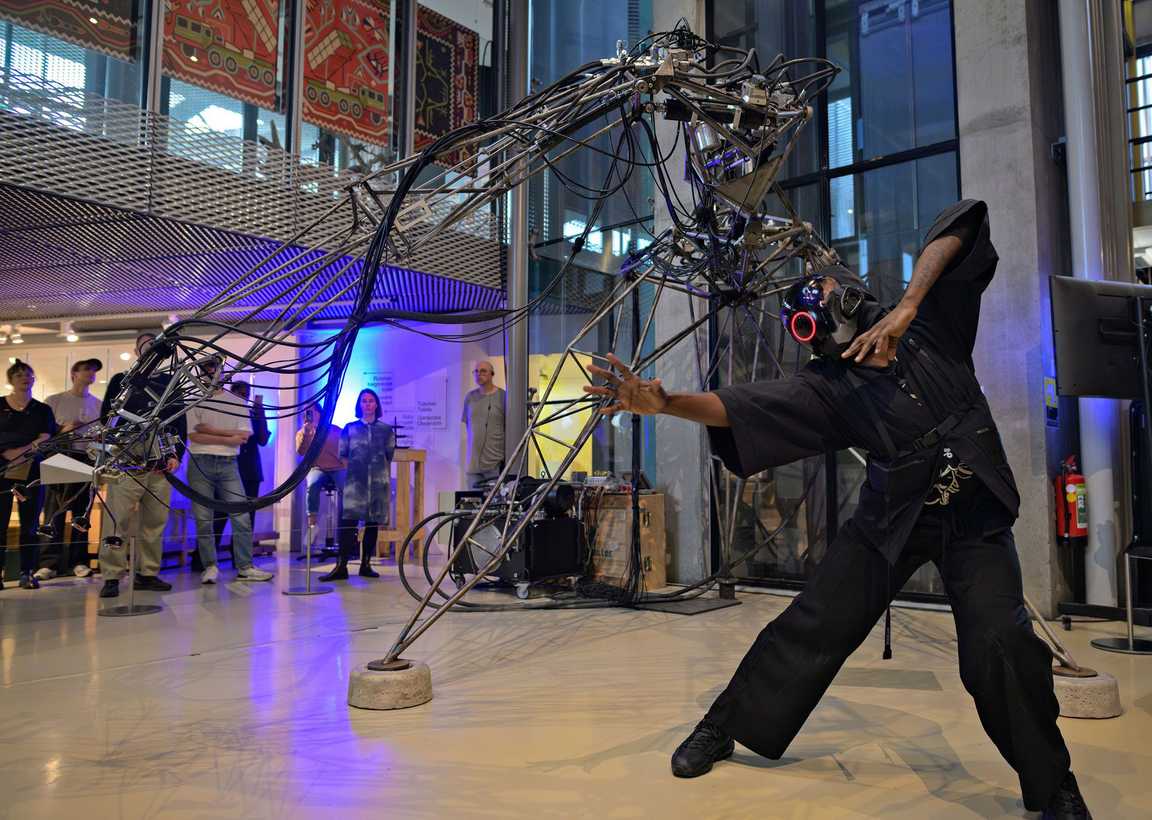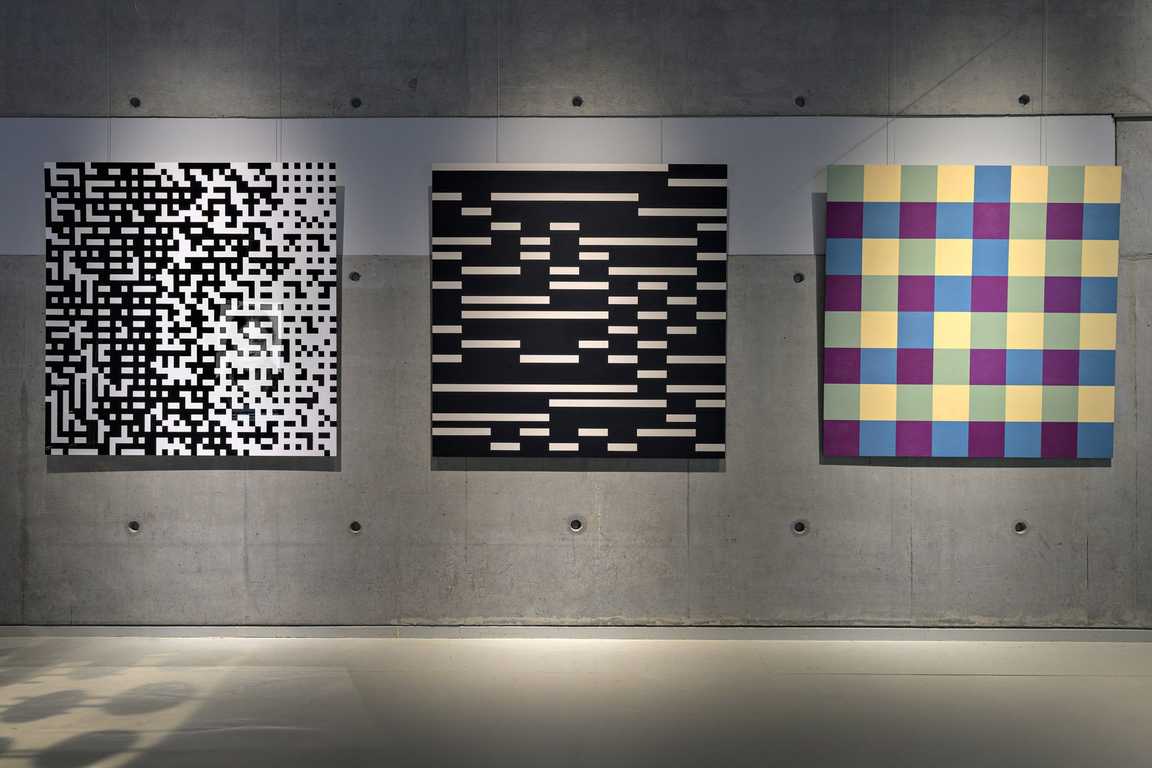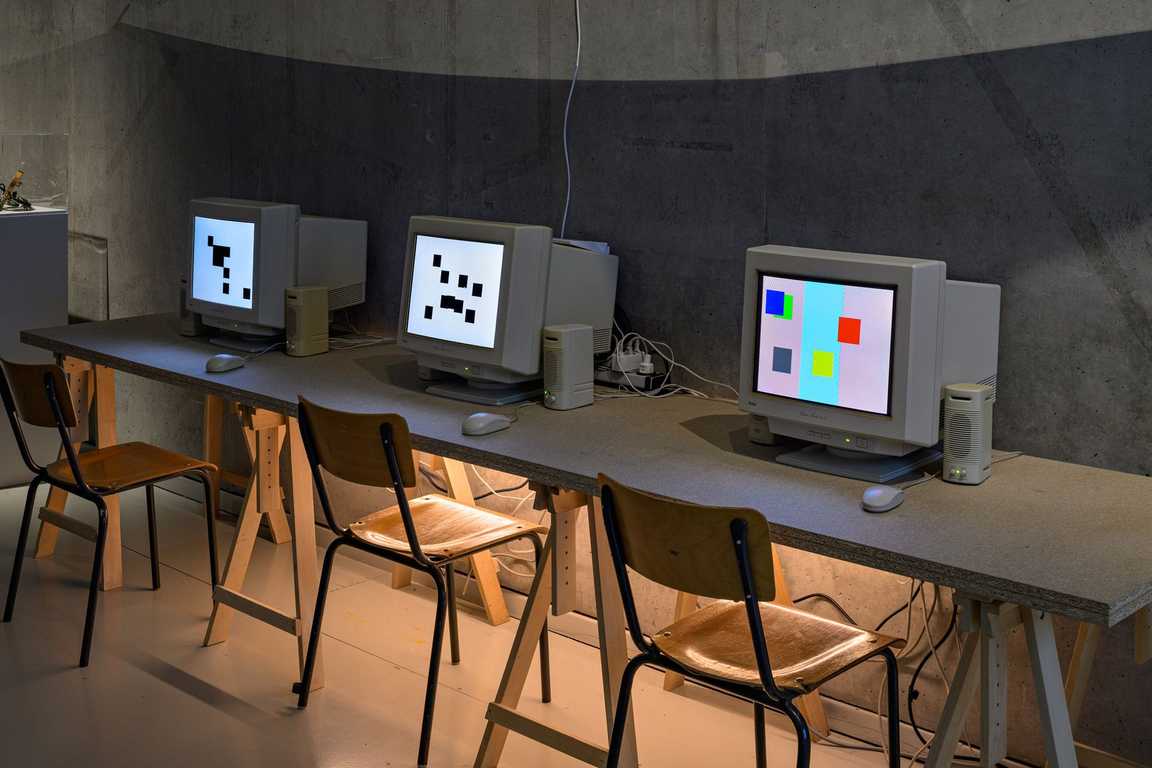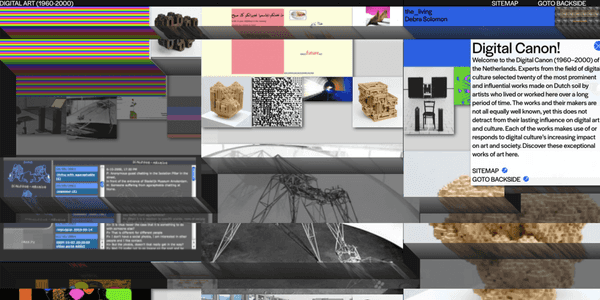
REBOOT. Pioneering Digital Art.
Nieuwe Instituut and LI-MA put into dialogue canonical and current Dutch digital art and culture.
LI-MA and Nieuwe Instituut, Rotterdam, presented the exhibition REBOOT. Pioneering Digital Art, 7 October 2023 – 12 May 2024. The exhibition featured twenty ground-breaking digital artworks from the Netherlands, which helped define our societal relationships with technology, alongside new works by ten makers who took inspiration from them in looking towards the future.
REBOOT. Pioneering Digital Art opened at Nieuwe Instituut in Rotterdam on 7 October 2023. The exhibition, an initiative of LI-MA and Nieuwe Instituut, celebrates the pioneering history of digital art and culture in the Netherlands. Curators Sanneke Huisman (LI-MA) and Klaas Kuitenbrouwer (Nieuwe Instituut) created the exhibition based around twenty ground-breaking digital artworks from the Netherlands from the period 1960-2000. In addition, they commissioned nine new works from ten contemporary makers, who took inspiration from these classics to explore how the debates they prompted remain relevant today.
In the late twentieth century, the Netherlands had a reputation as an adventurous pioneer in the field of digital art and culture. From the beginning of the computer revolution Dutch artists played a crucial role in the development of digital culture. The artistic questions they raised contain the seeds of the big questions about the fundamental influence of digital technology on today's society.
Curators Sanneke Huisman of LI-MA and Klaas Kuitenbrouwer of the Nieuwe Instituut created REBOOT. Pioneering Digital Art to ‘reboot’ the dialogue between the past and present of digital art and culture from the Netherlands, revealing the lasting relevance of the questions asked by the artists of that time. REBOOT is therefore not just a retrospective, but an invitation to think about the future.

Opening of REBOOT. Pioneering Digital Art at Nieuwe Instituut, Rotterdam. Brui5er performing alongside The Senster (1968–70) by Edward Ihnatowicz.
Background
“When you ‘reboot’ a computer system or program, you shut it down and then restart it shortly afterwards, starting over. With REBOOT, the Nieuwe Instituut and LI-MA essentially aim to reveal an ongoing, living history of digital art and culture,” state Huisman and Kuitenbrouwer.
“The artistic questions of the past are the social questions of today. The early expectations of what a computer can do, what networks might mean for society, and how we can be creative in our collaboration with machines or programs – all these are questions that we still recognise decades later, but on a different scale. We can learn a lot from the independence with which artists once dealt with the rise of the digital, for example when it comes to freeing ourselves from the power of Big Tech today.”
Key works
Huisman and Kuitenbrouwer curated the exhibition around twenty ground-breaking ‘key works’ from previous decades, plus nine new works by contemporary makers who were inspired by those key works. In the exhibition, four storylines take visitors along the artistic questions of the past and the techno-social questions of today: about the utopia of the internet, online identity, aesthetic development and the collaboration between humans and computers.
The twenty key works are from the Digital Canon (1960-2000), a non-exhaustive, unfixed overview of influential digital art, which was compiled by experts in 2017–2019 and commissioned by LI-MA. Among others, these include video and sound painting Moiré by video art pioneers Livinus and Jeep van de Bundt (1975); Dick Raaijmakers' large-scale loudspeaker installation Ideofoon I (1968-1970); the cybernetic sculpture The Senster by Edward Ihnatowicz (1968-1970); the algorithmic sculpture Breed by Driessens & Verstappen; internet artwork the_living by Debra Solomon (1998); and Scrollbar Composition by Jan Robert Leegte (2000).

Peter Struycken 'Komputerstrukturen' (1969–1972) at REBOOT. Pioneering Digital Art, Nieuwe Instituut. Photo by Pieter Kers.
New Works
In addition, the curators asked nine makers to create a new work: a vision of the future about the role of technology in society, inspired by one of the key works. These makers come from unexpected disciplines – to emphasise that the impact of digital culture now extends far beyond just digital art.
For instance, filmmaker Janilda Bartolomeu reflects on her digital identity and what would remain of it after death, inspired by the_living by Debra Solomon. 'Serious game'-studio Play the City responds to Breed by Driessens & Verstappen with a game about the spatial development of a neighbourhood in Rotterdam. Jonas Lund took inspiration from the feedback loop of Dick Raaijmakers's Ideofoon I for an AI system that analyszes visitors' reactions in an effort to improve itself. Movement artist Mark Sheats explores the future of Edward Ihnatowicz's The Senster and his own Krumping persona Brui5er.
All Featured Works
The exhibition featured works by: Annie Abrahams, Livinus and Jeep van de Bundt, Driessens & Verstappen, Edward Ihnatowicz, JODI, Bas van Koolwijk, Lancel/Maat, Jan Robert Leegte, Yvonne Le Grand, Peter Luining, Martine Neddam, Marnix de Nijs and Edwin van der Heide, Dick Raaijmakers, Joost Rekveld, Remko Scha, Jeffrey Shaw, Debra Solomon, Steina, Peter Struycken, and Michel Waisvisz.
The new, contemporary responses are by: Janilda Bartolomeu, Cihad Caner, Dries Depoorter, Swendeline Ersilia, Ali Eslami, Jonas Lund, Luna Maurer and Roel Wouters, Play The City, and Brui5er.
Spatial design: Atelier Tomas Dirrix
Graphic design: Yessica Deira & Cato Stigter
Light design: 50LUX

Pieter Luining, 'Clickclub' (1996) at REBOOT. Pioneering Digital Art, Nieuwe Instituut. Photo by Pieter Kers.
Digital Care
In the run-up to and during REBOOT, co-organiser LI-MA has highlighted a few key works on display in the exhibition. Through the public research and activity programme Digital Care, LI-MA also explores what it means to collect, preserve and exhibit digital art – both in the current context and with a view to the future.
REBOOT was created with the support of Creative Industries Fund NL, Mondriaan Fund, Fonds 21 and Network Archives Design and Digital Culture.









